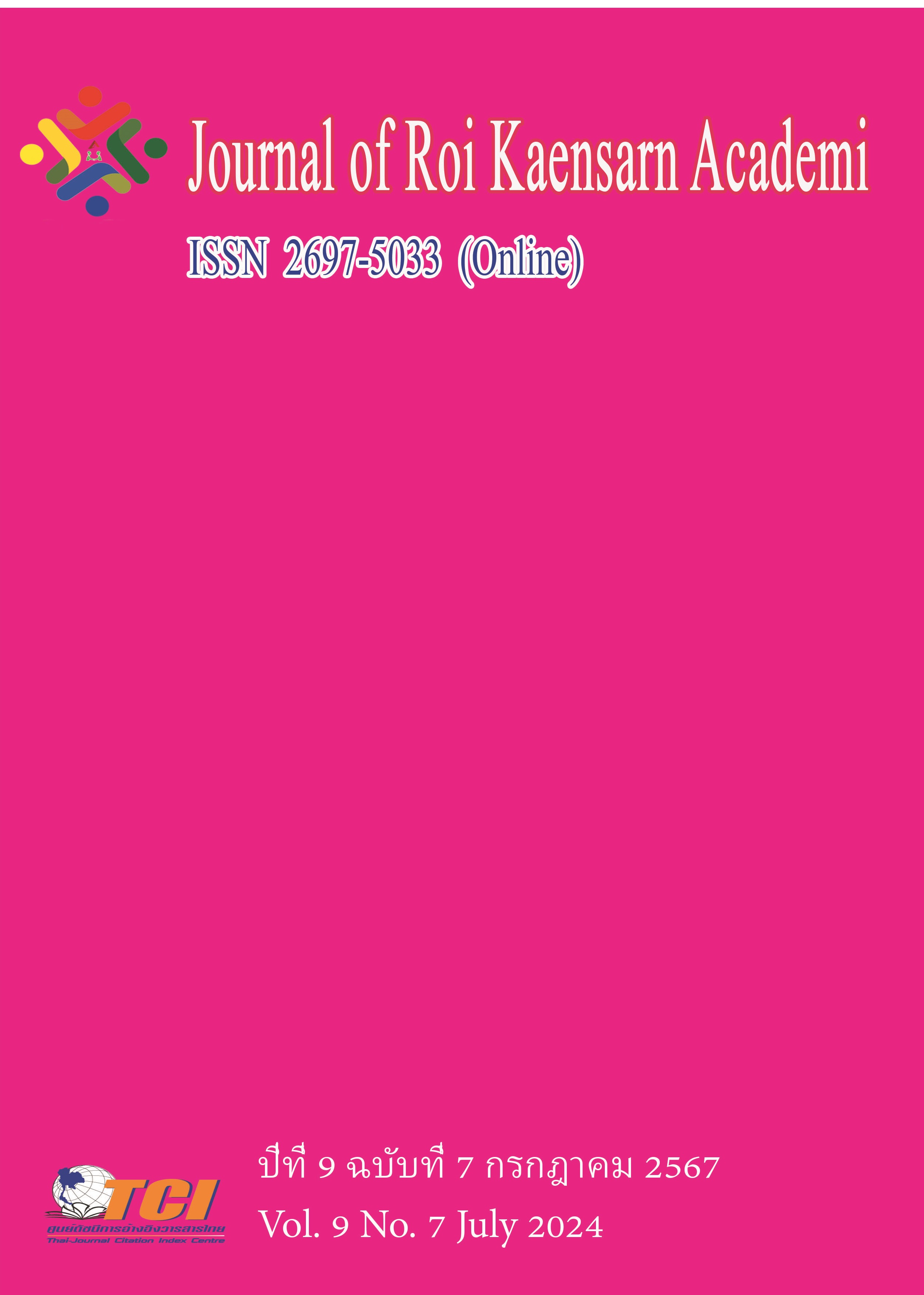Comparative Cultural Analysis and Modern Reflections on Chinese Dragon Dance
Main Article Content
บทคัดย่อ
Developed as a customary ritual ceremony, yet today it is believed to be an integral part of both Chinese folk art and culture. Against this background, it is important to consider how the years have treated Chinese dragon dances in terms of modern stylistic application. Specifically, it classifies systematically the diversities of kinds of dragons in terms of archive records, designs, and analysis of cultural significance. 10 cultural experts were also invited to carry out semi-structured interviews in which more light would be shed on the relevance of this dance today in giving recommendations on how to sustain it in light of this intangible heritage.
These findings disclosed 5 different classifications of dragons based on their ritual purpose. A further fact agreed upon is that they have come to transcend the traditional boundaries due to such modern adaptations as augmented reality technology, which further retains its symbolic potency at home in young, diverse sensibilities. Yet, there certainly exists an urgency for their preservation in the face of a declining tradition, making youth education on cultural values paramount.
In sum, the Chinese dragon dances encapsulate a deep cultural past imbued by an innovative present; traditional modernity supports their dynamism for cross-generation transmission of ethnic pride in China and globally among diasporic countries. This research will offer an analytical frame to understand the duality and importance of safeguarding this dragon dance heritage through strategic adaptations and youth involvement.
Article Details
เอกสารอ้างอิง
Budianta, M. (2007). The Dragon Dance: Shifting Meanings of Chineseness in Indonesia. Palgrave Macmillan UK EBooks, 169–189. https://doi.org/10.1057/978023059 2049_9
Choy, G. (2017). Chinese Culture in Early Educational Environments. Early Childhood Education in Chinese Societies, 31–52. https://doi.org/10.1007/978-94-024-1004-4_3
DiCicco-Bloom, B., & Crabtree, B. F. (2006). The qualitative research interview. Medical Education, 40 (4), 314–321.
Doody, O., & Noonan, M. (2013). Preparing and Conducting Interviews to Collect Data. Nurse Researcher, 20 (5), 28–32.
Flick, U. (2017). The SAGE Handbook of Qualitative Data Collection. Www.torrossa.com, 7 (2), 1736.https://www.torrossa.com/gs/resource eProxy?an=5018779&publisher =FZ7200#page=262
Global Times. (2023). Young inheritors bring creative changes to China’s Intangible Cultur al Heritages - Global Times. Www.globaltimes.cn. https://www.globaltimes.cn/pa ge/202402/1307879.shtml
Goodarzparvari, P., & Bueno Camejo, F. C. (2018). Preservation of cultural heritage via edu cation of children, utilizing visual communication: Persepolis as a case of study. Roderic.uv.es, 7. https://roderic.uv.es/handle/10550/74496
Huangsheng, K. (2021, August 9). The Practice Exploration of the Penetration of the Dragon Dance Option Course in Shanghai Higher Vocational Colleges. Www.atlantis-Press.com; Atlantis Press. https://doi.org/10.2991/assehr.k.210806.113
Li, D. (2019, May 3). The Classical Echo in Chinese Poetic Modernism. Brill.com; Brill. https://brill.com/display/book/edcoll/9789004402898/BP000013.xml?alreadyAuthRedirecting
Liang, Y., & Zhang, G. (2019). Research on the Modern Changes of Yushan Dragon Dance Culture in Chongqing. Advances in Physical Sciences, 07 (03), 87–96. https://doi.org /10.12677/aps.2019.73012
Lin, Q., & Lian, Z. (2018). On Protection of Intangible Cultural Heritage in China from the Intellectual Property Rights Perspective. Sustainability, 10 (12), 4369. https://doi.org/ 10.3390/su10124369
Pathak, V., Kalra, S., & Jena, B. (2013). Qualitative Research. Perspectives in Clinical Rese arch, 4 (3), 192. NCBI.
Shafira, V., & Rui, C. (2023). Semiotics Analyisis of Representation Chinese Culture in Sony Pictures Animation Film Wish Dragon Movie. MANDARINABLE Journal of Chinese Studies, 2 (2), 86–103. https://doi.org/10.20961/mandarinable.v2i2.799
Zhang, Q. (2023). Exploration and Analysis on the Development of Chinese Dragon Dance and the Training System of Dragon Dancing in Universities. Journal of Humanities, Arts and Social Science, 7 (2), 461–464. https://doi.org/10.26855/jhass.2023.02.040

